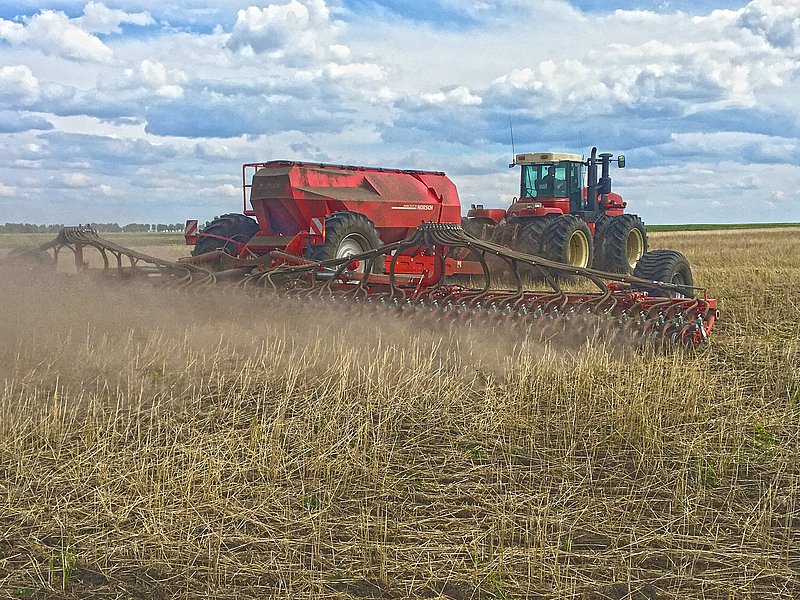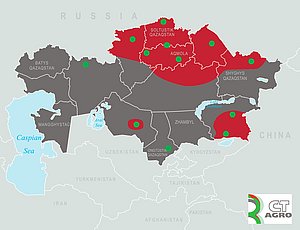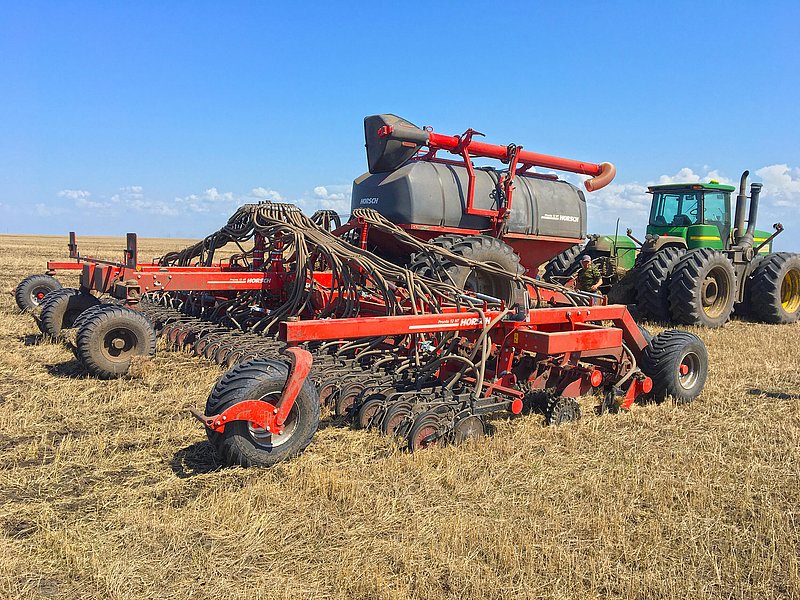
Technology for Kazakhstan
The agricultural sector in Kazakhstan develops very positively. But the gap between traditional and state-of-the-art, innovative farms becomes larger and larger. HORSCH has been successful in Kazakhstan for many years. The focus on the requirement of the customers as well as the co-operation with the strong sales partner CT Agro is the key for this success.

The agricultural area in Kazakhstan amounts to 22.5 million hectares. The share of the individual crops in 2020 is: wheat 11.4 million hectares, barley 2.8 million hectares, oil crops (linseed, sunflowers, rape, mustard…) 3.0 million hectares, pulses 218.000 hectares, oats and maize 252.000 hectares, rice 102.000 hectares. The rest are approx. 3.5 million hectares of vegetables and grassland. The linseed share is rather high as this crop can be marketed very well and optimally fits into rotation. The share of rape has decreased to approx. half a million hectares because of the enormous pest pressure.
Due to the climate conditions they mainly grow spring crops in a very tight window from sowing at the beginning/mid of May to the harvest in August and September. Especially the optimum moment for sowing is essential in Kazakhstan as from the beginning of May temperatures rise very quickly and the wind contributes to dry off the fields. It is all about catching exactly the day when it is optimum to drive on the field for the first time and when there still is enough water to guarantee good germination conditions. Sowing, thus, is mainly carried out between the 10th and 25th of May. They usually start with linseed, followed by wheat. The later sowing is carried out, the deeper they have to sow to still get in contact with the important soil moisture. This in turn has a negative effect on the yield as the plants right at the beginning have to spend a lot of energy on growing. In Kazakhstan, the wheat yield in average amounts to 2 to 3 tons per hectare. This is where the wide gap between the modern farms with Western technologies and the very traditional farms becomes apparent. The latter often only harvest about 1 ton per hectare, while the professional farms – if the weather is fine and there is enough water - can achieve 6 tons.
The main buyers for Kazakh wheat are the Iran, Afghanistan and China while linseed is often sold to Germany and Belgium due to the favourable price.
Gigantic fields
Among others, the positive development of the agricultural sector in Kazakhstan is due to the fact that there was a lot of free land when the old large farms were given up. Since then investors have been relying more and more on modern technology from Western countries. HORSCH mainly focuses on the North and the East of the country whereas the small-scale farms in the South rather buy more simple technology from China. The central regions of Kazakhstan mainly consist of deserts and hills. The average HORSCH customer in the North has about 40,000 hectares of arable land while a small Kazakh farmer farms about 2,000 hectares. The arable land of a large farm may go up to gigantic 500,000 hectares.
The good regional prices for cereals of about 200 Dollar for one ton of wheat attracted large investments in the Kazakh agricultural sector. This resulted in considerable expenses for modern technology which in turn led to a further increase in yield and further investments. As there still are a lot of farms that use machines from the 1960s and virtually practice no fertilisation and plant protection at all, the country still has a lot of potential for growth. The structural change is in full swing.
Though in the past years there was more rainfall, drought dominates and almost all fields are cultivated with no-till methods including a simultaneous fertilisation. Given the climate conditions in the country this is one of the grantees of success for high yields. 90% of all HORSCH customers in Kazakhstan buy corresponding seed drills – among others the Sprinter 15 NT. After having gathered first experiences HORSCH very quickly adapted this machine to the requirements of the customers. Thus, the 15-metre-wide machine now is available for solid as well as for liquid fertiliser. In Kazakhstan, too, the secret of success was to provide each customer with the machine that was perfectly adapted to his soil and his climate conditions. The application and particularly the perfect placement of the fertiliser while sowing was one of the most efficient measures to increase yields in Kazakhstan. The Avatar 18 SD, too, with its three-part hopper perfectly matches these requirements.
There are many inquiries with regard to the new HORSCH single grain technology with the new AirSpeed metering generation which surely will consolidate the success of the sowing technology in Kazakhstan as with regard to single grain sowing high hectare outputs are essential because of the tight window and the extremely large fields.
Reliable sales partner
The plant protection sector, too, is gaining momentum. The new generation of the Leeb 6.280 PT is already working in Kazakhstan and achieves enormous outputs of up to 1,000 hectares per day. This season, some machines even have already been working on about 30,000 hectares.
On the Kazakh fields, tillage is only carried out to a very reduced extent – and rather on farms that work according to Western models. This, for example, also includes a seedbed preparation with the compact disc harrow Joker RT. For traditional tillage in autumn as well as for breaking up fallow land, a Tiger MT or a Tiger LT is used, if at all. Even though the farms strongly rely on no-till methods, a targeted, intensive tillage helps to remove structural problems on selected fields.

The excellent partnership with CT Agro also contributed to HORSCH’s success. The dealer’s sites are distributed all over Kazakhstan (see map) and the turnover is mainly generated with machines from Claas and HORSCH. The co-operation with CT Agro started ten years ago with the first Sprinter 24 NT that had specifically been adapted to the conditions of the country. The secret of success is this mixture of state-of-the-art technology, individual counselling and perfect service by the dealer that thus leads to an advancing modernisation in farming.